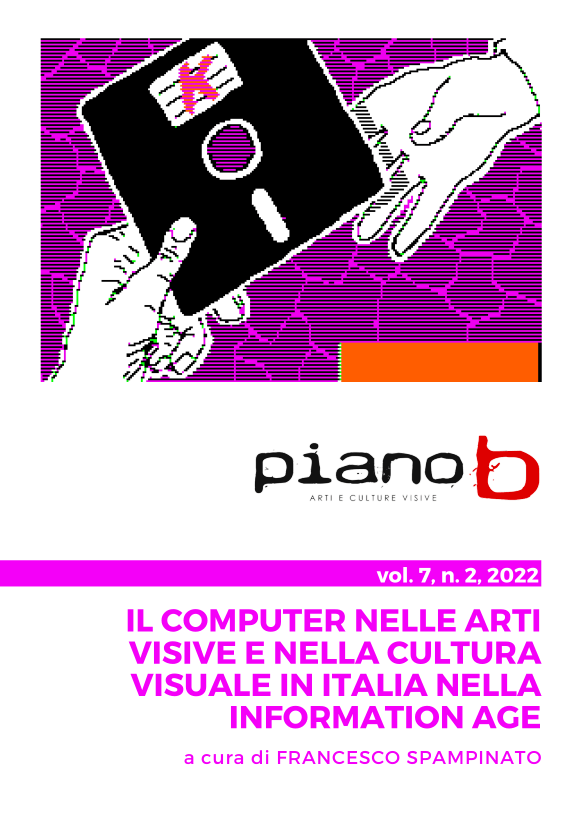Programmed images: Auro Lecci’s research into the pioneering phase of computer art
DOI:
https://doi.org/10.6092/issn.2531-9876/16303Keywords:
Auro Lecci, computer art, computergraphics, art and programming, artificial intelligenceAbstract
This paper seeks to reflect on the origins of computer art in Italy by examining the work of Auro Lecci, an artist who has explored digital technologies since the mid 1960s, when he joined Pietro Grossi’s Studio di Fonologia Musicale in Florence. Differently than elsewhere, collaborations between artists and computer research centres were rare in Italy, so Lecci's experience is significant, not least because he was working at the Centro Nazionale Universitario di Calcolo Elettronico (CNUCE) in Pisa. With a background as a painter, Lecci approaches the computer by exploring its logic and studying its mathematical language. His computer-generated images reveal the geometric aesthetic of the machine and question the relationship between programming language and image, preset data and random numbers, in line with the research of leading pioneers of computer art. While Lecci worked in isolation in Italy, his relationships with European and American artists and scholars were critical, as was his involvement in the New Tendecies international movement, which opened a productive debate around the use of computers in visual research. In 1970 he moved to the USA with the aim of continuing the work in the field of computer art at the University of Massachusetts.
Downloads
Published
How to Cite
Issue
Section
License
Copyright (c) 2022 Paola Lagonigro

This work is licensed under a Creative Commons Attribution-NonCommercial-ShareAlike 3.0 Unported License.




